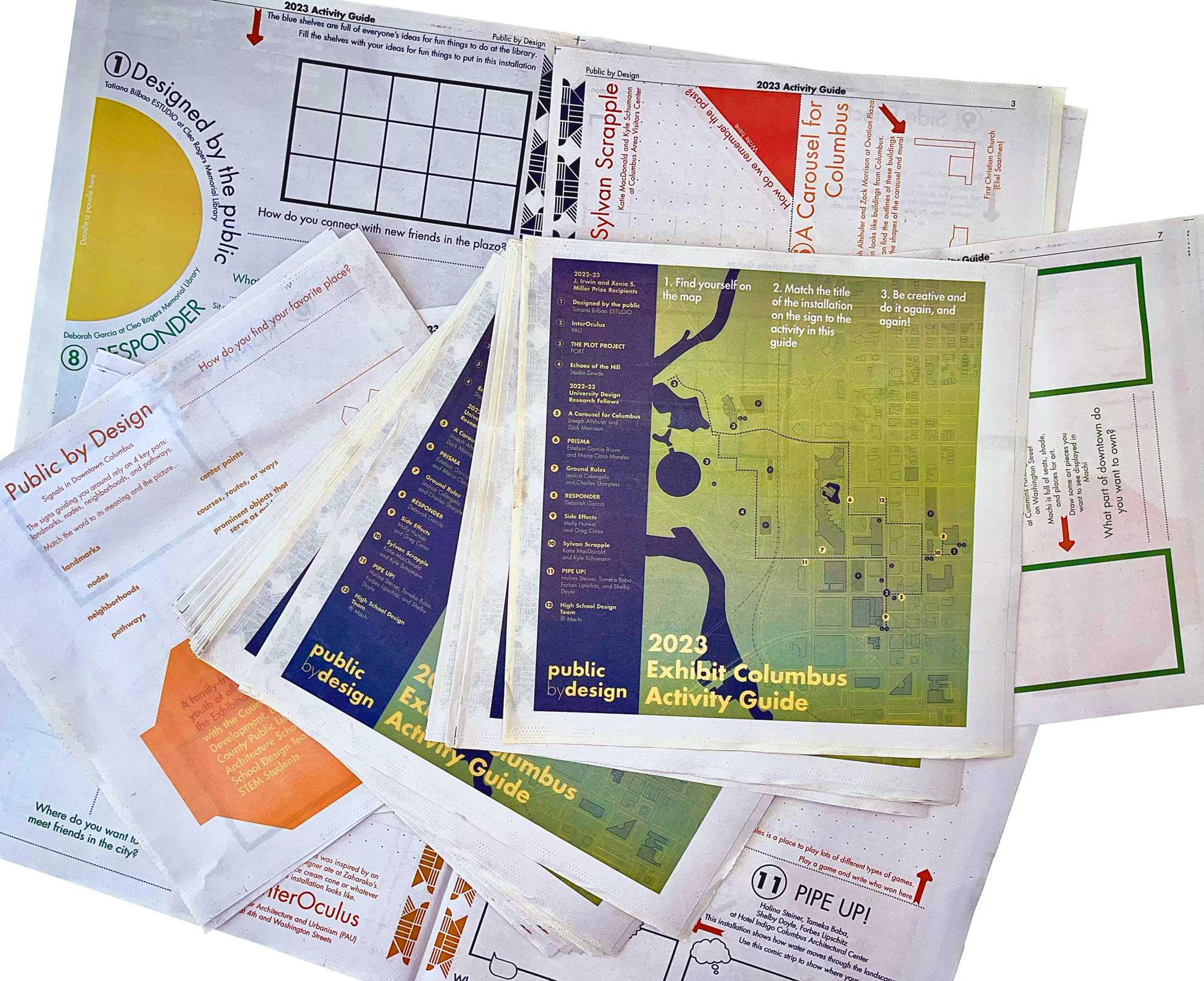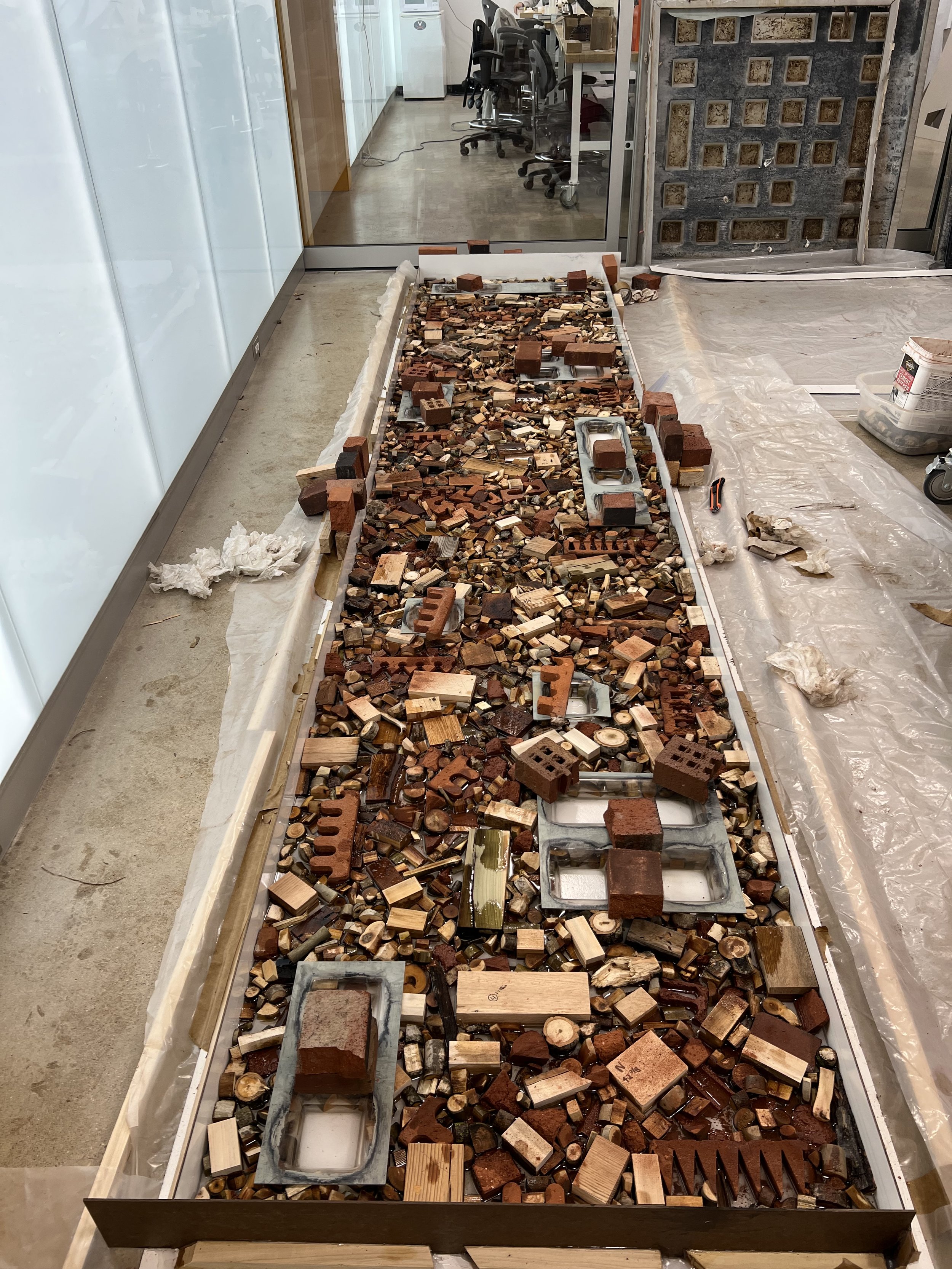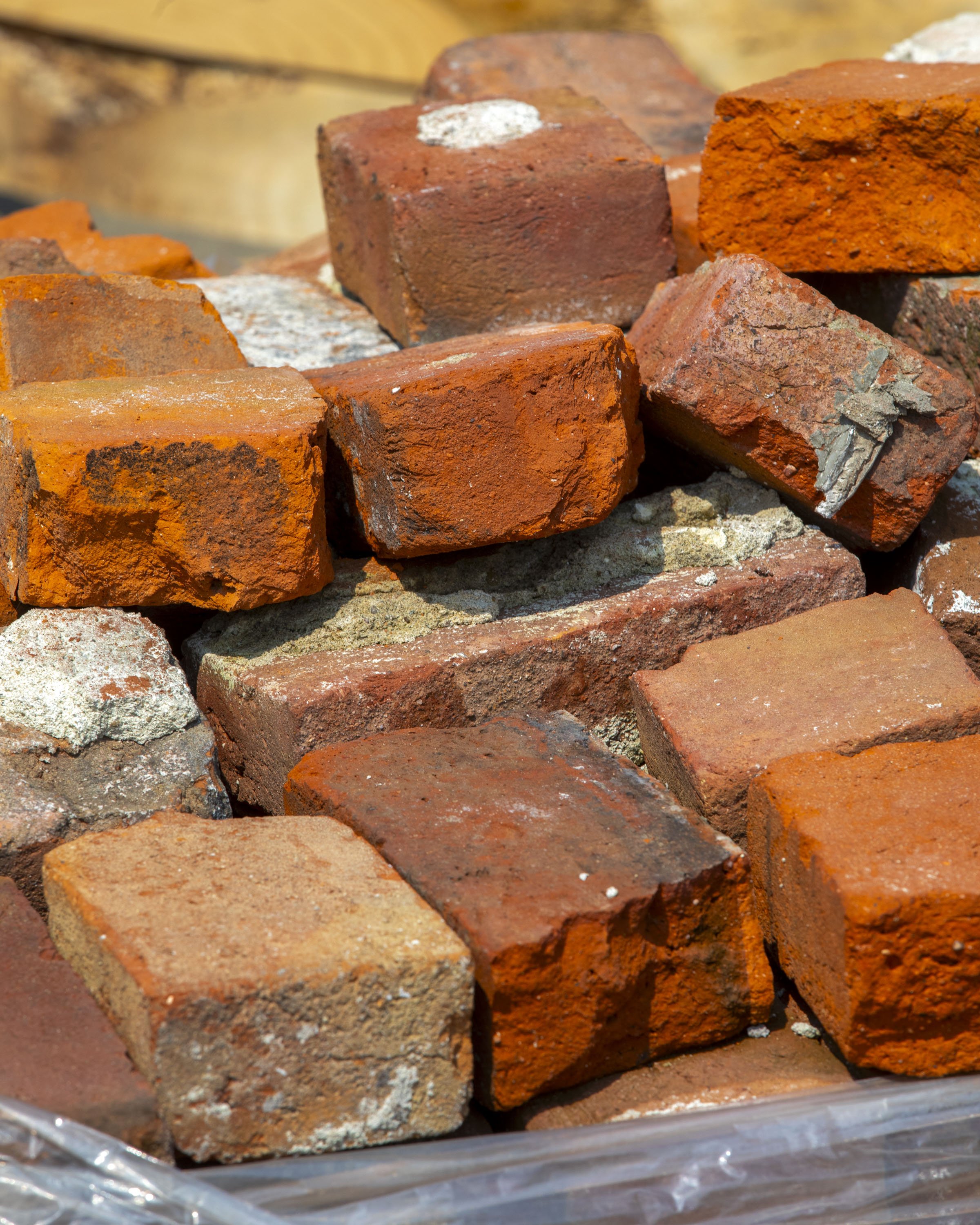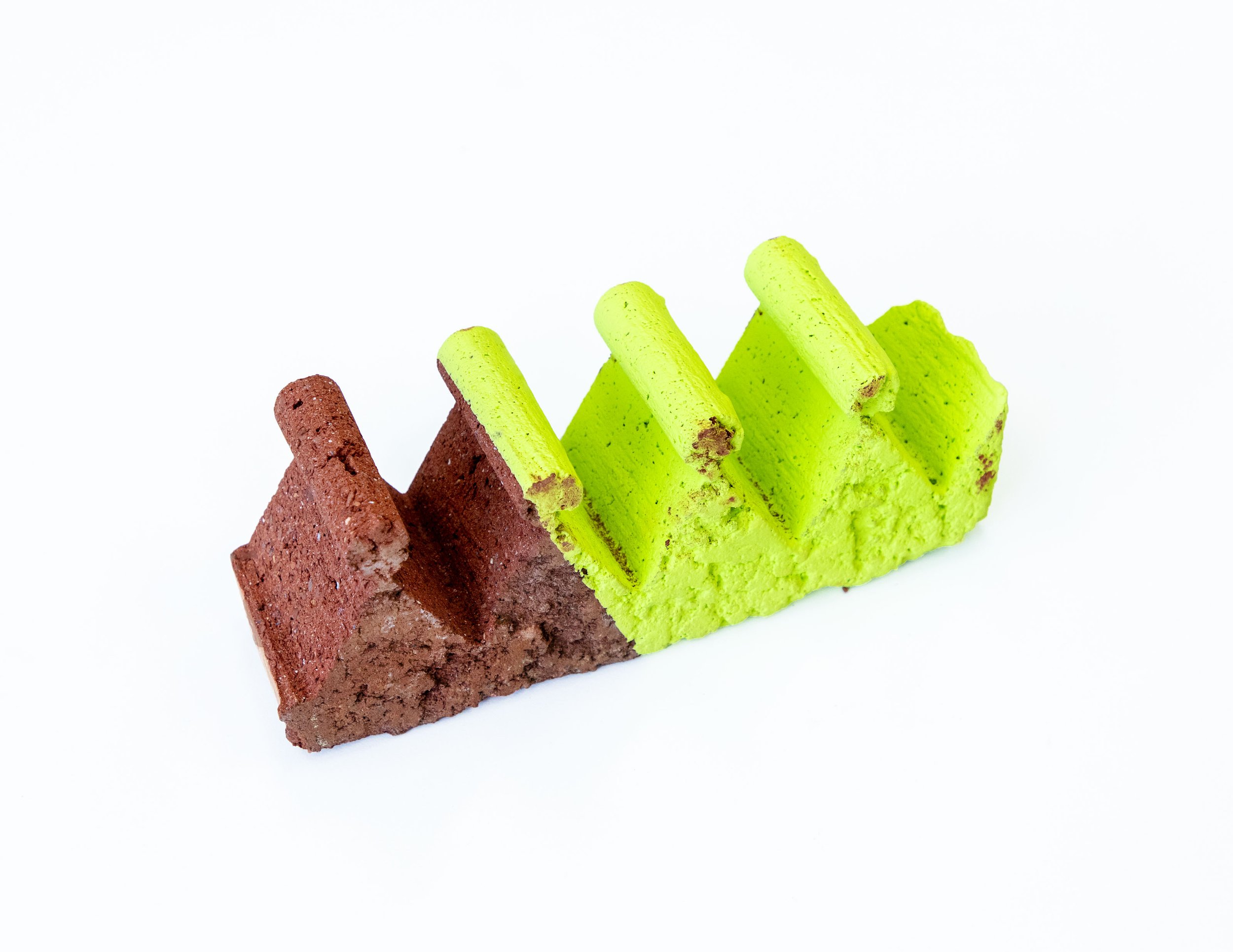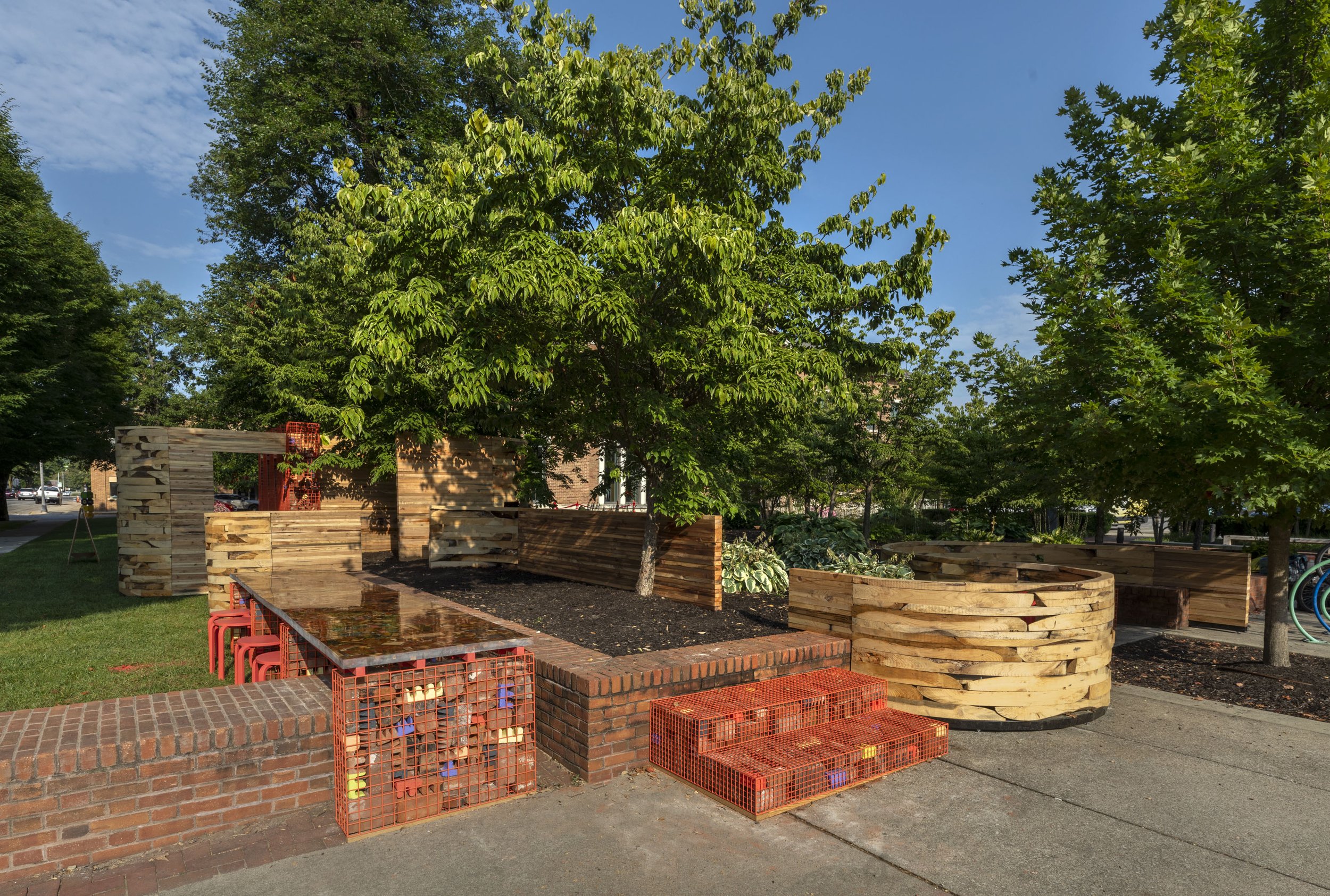
UDRF
●
Katie MacDonald and Kyle Schumann
●
Sylvan Scrapple
●
Presented by Columbus Area Visitors Center
●
UDRF ● Katie MacDonald and Kyle Schumann ● Sylvan Scrapple ● Presented by Columbus Area Visitors Center ●
Sylvan Scrapple draws parallels between the use of waste in cooking and construction, creating a wooded oasis for dining and exchange.
Non-linear wood unfit for traditional lumber is used to construct curving panels. Boards cut on a purpose-built robotic sawmill are stacked into snaking walls, making use of natural curvature to create thin structural surfaces.
Bricks salvaged from the burned Irwin Block and renovated First Christian Church tower are collected in metal gabion cages. Gabions double as pieces of urban furniture, such as walls, dining table, coffee table, and stairs.
Wood, bricks, and scraps form a 15’ dining table that creates a center for the installation. Bound with bioresin, this table closely resembles congealed scrapple. A game of “I spy” uncovers panels salvaged from Eliel Saarinen’s church tower and branches from Mill Race Park. This table is the venue for Table Scraps, an exhibition combining recipes with place settings, all sourced from the public.
Accessibility
The exhibit is located adjacent to and within a raised garden bed and can be viewed from a flat grassy area or a nearby accessible sidewalk.
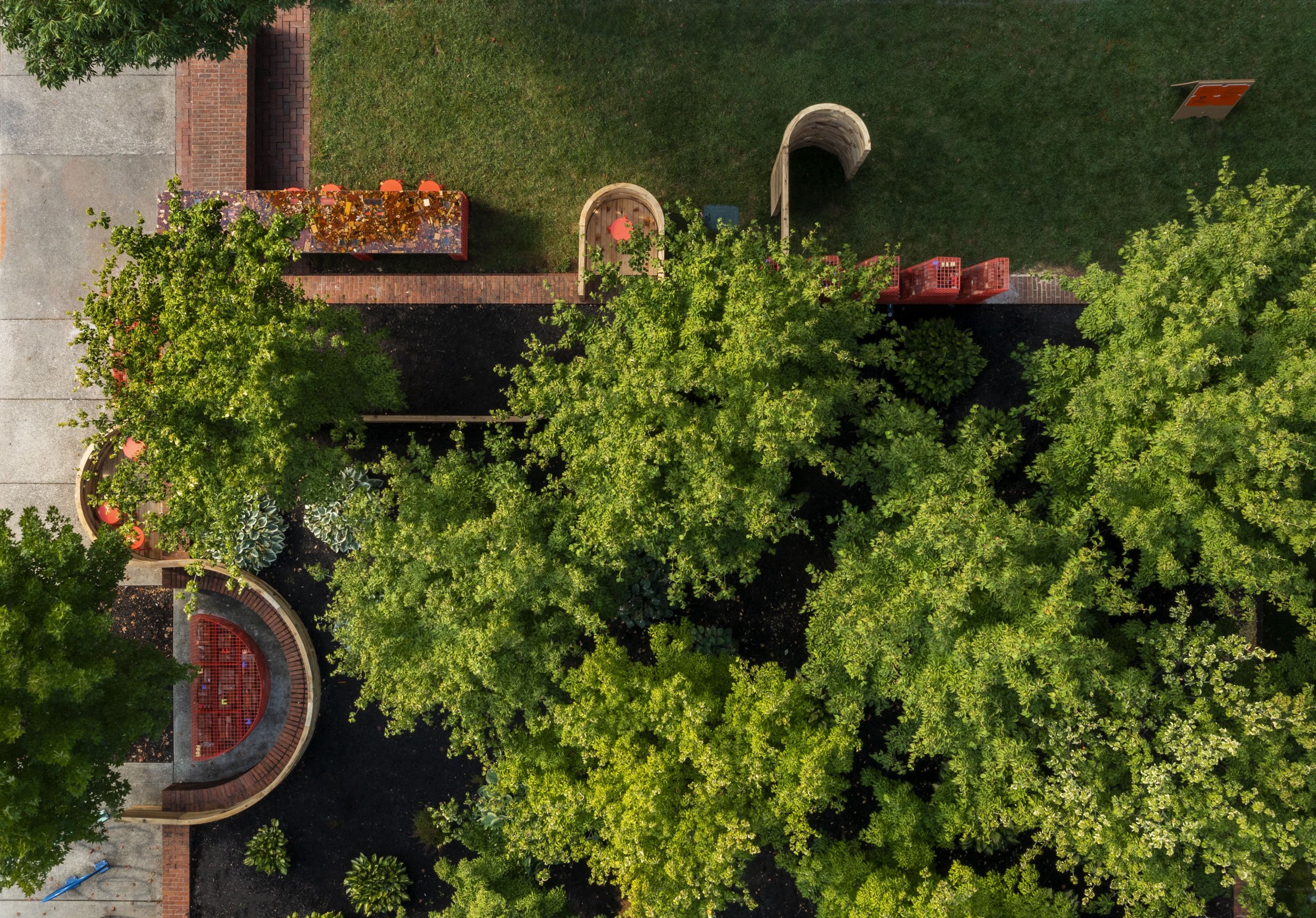
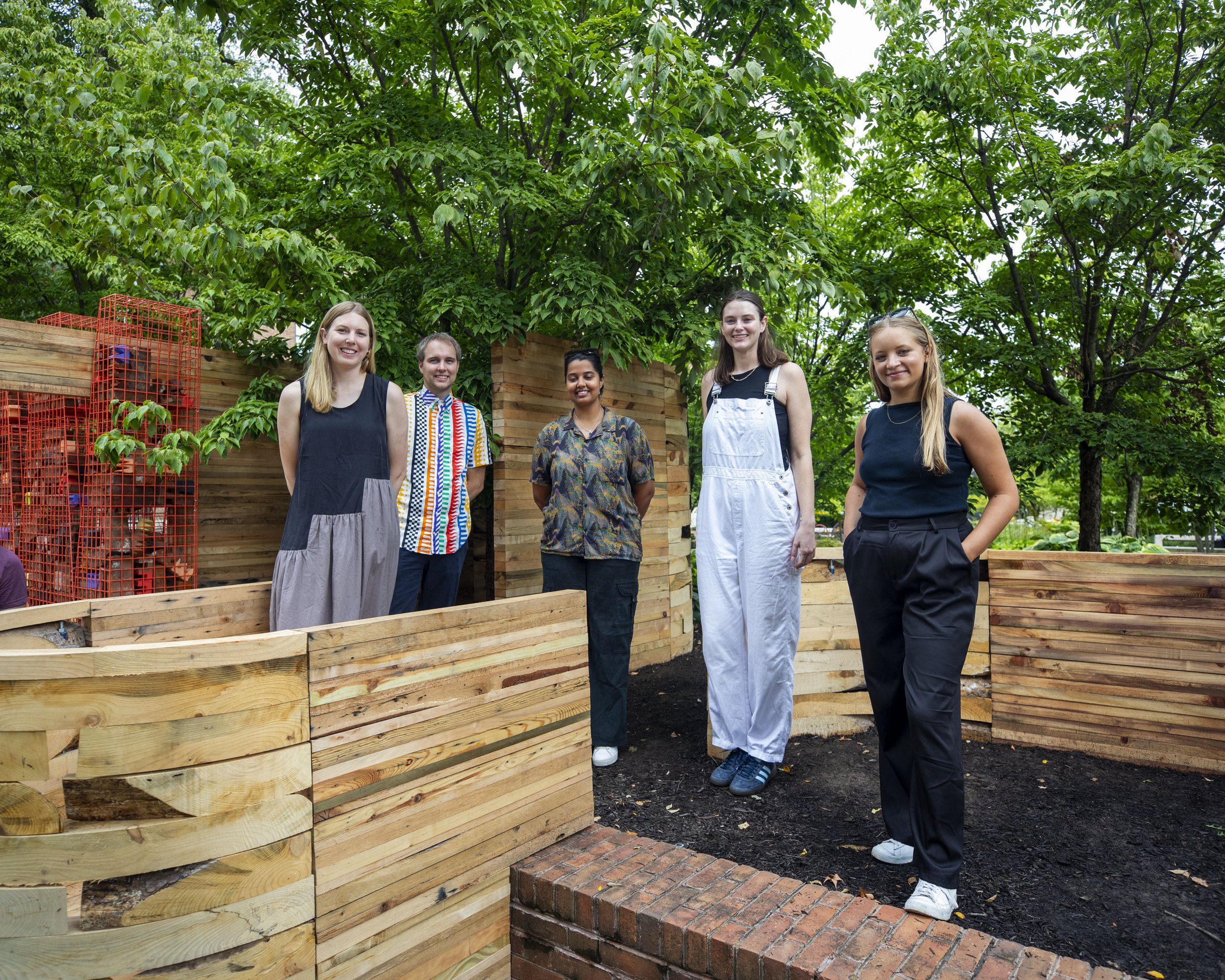
How do we interpret the past?

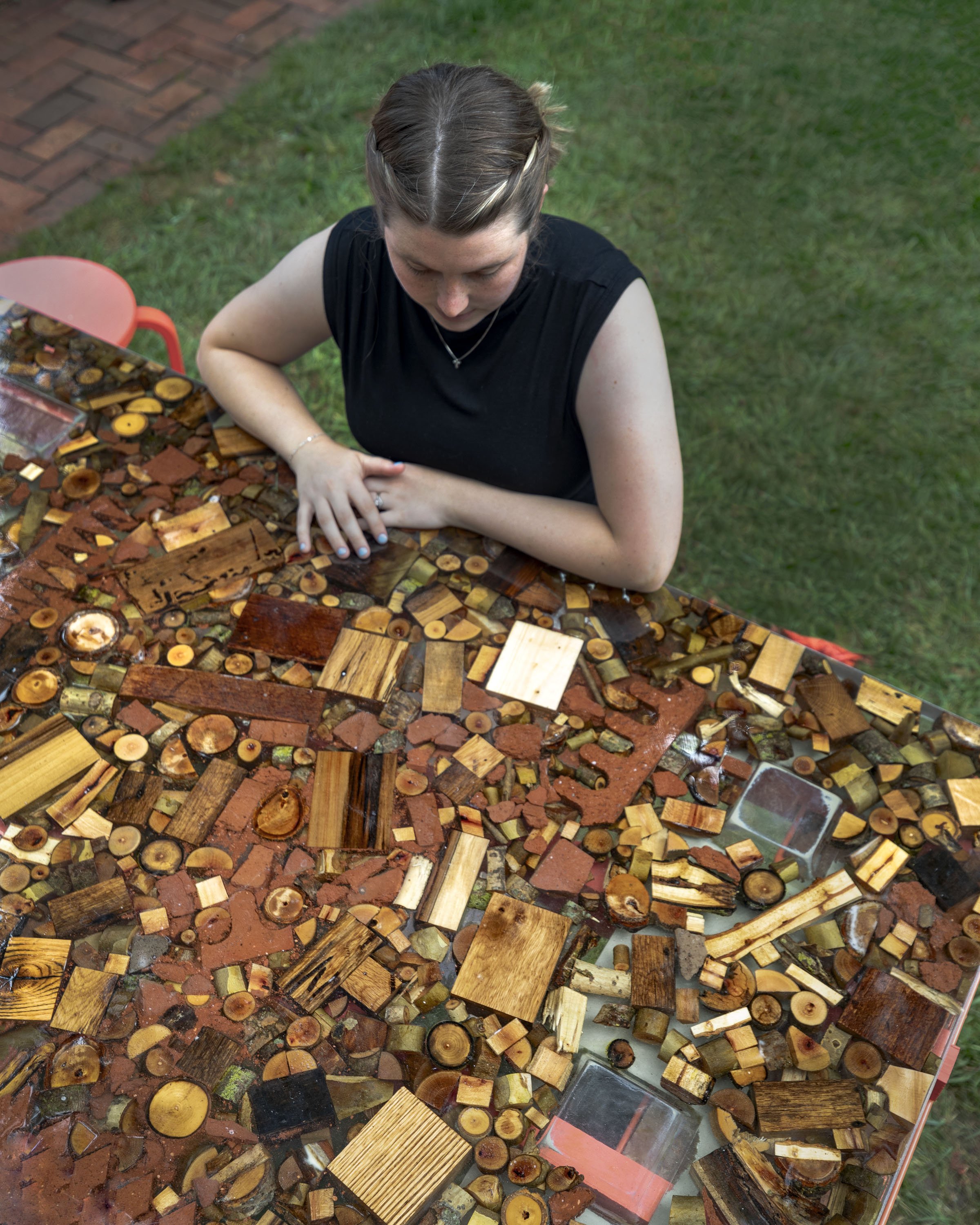
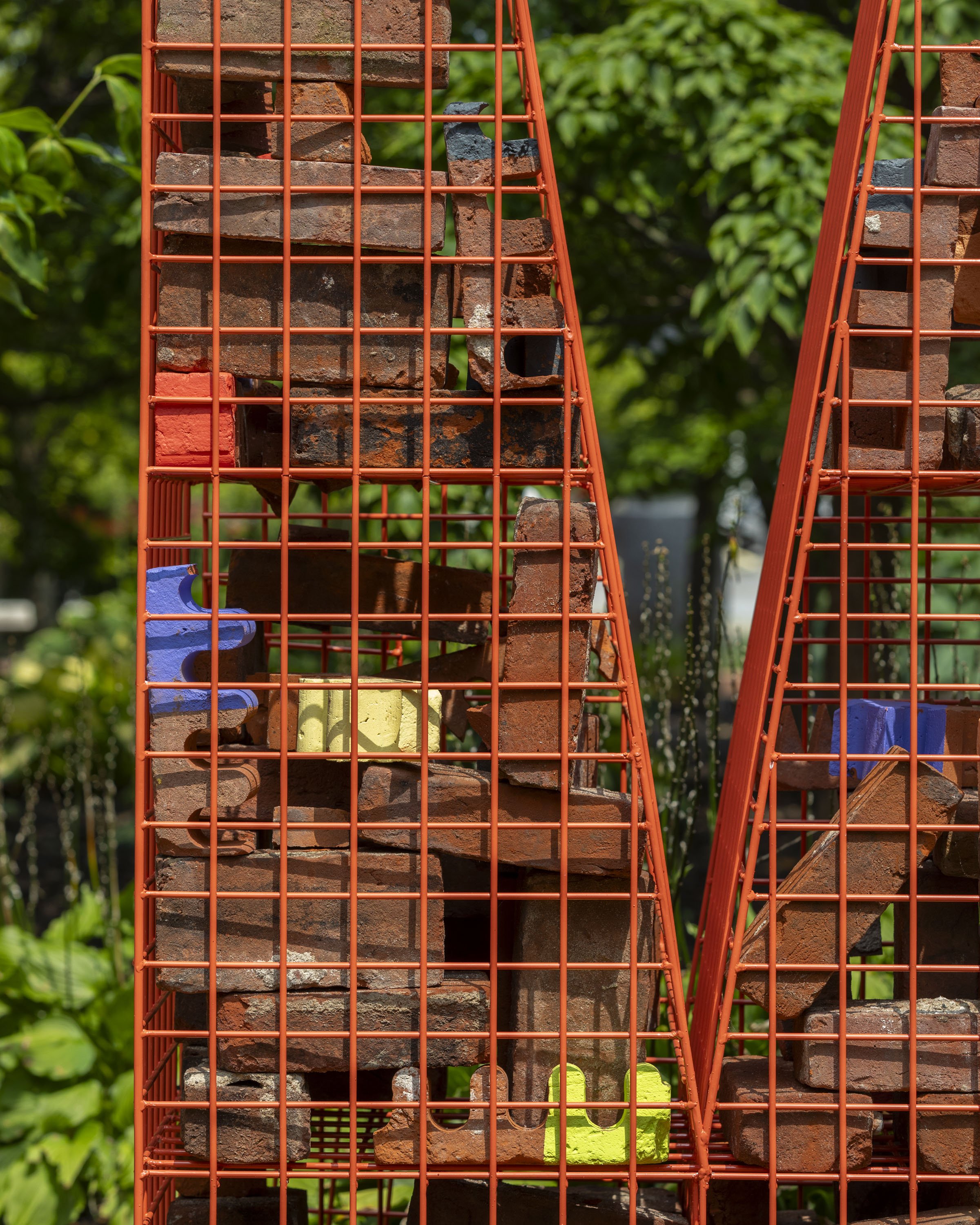
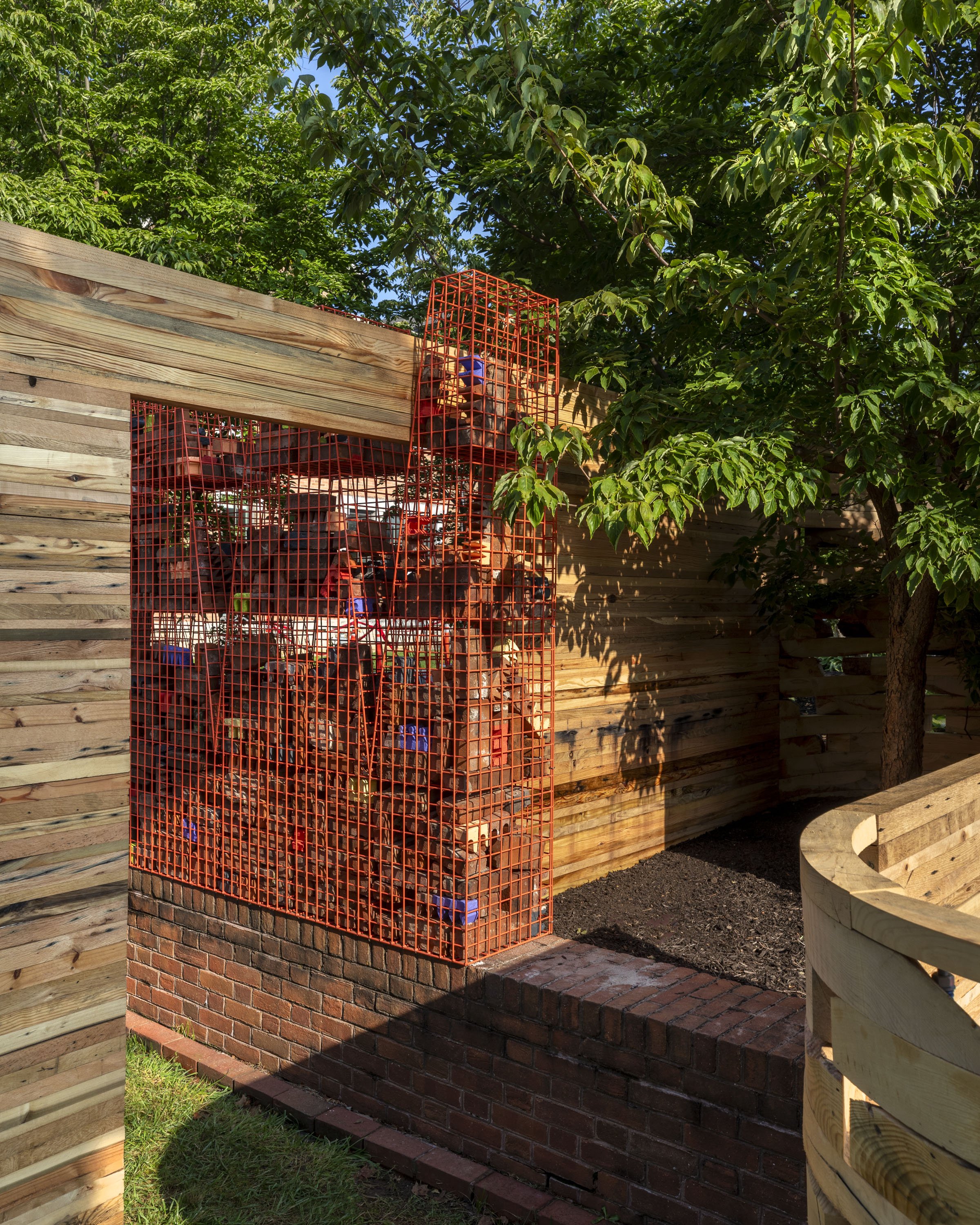
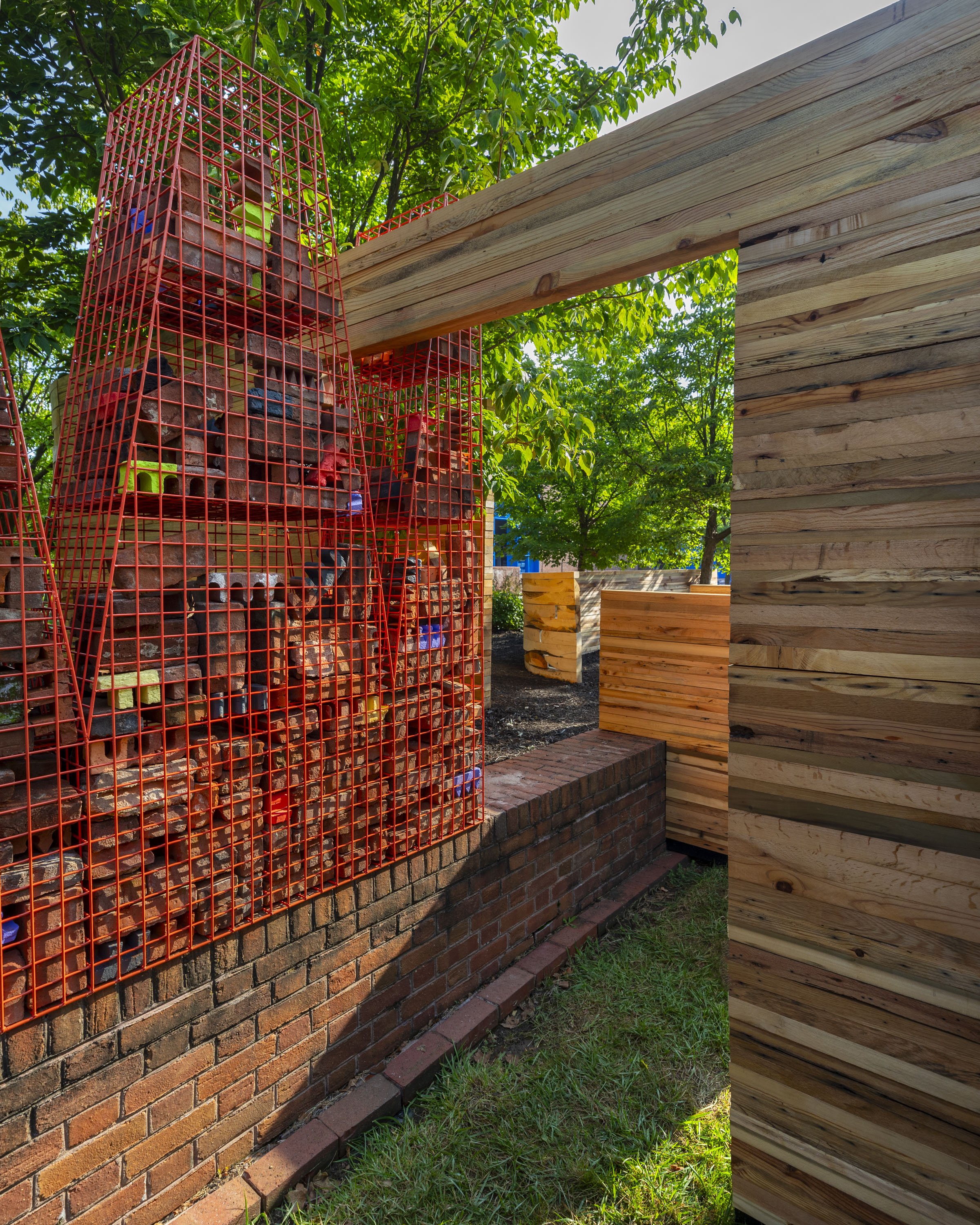
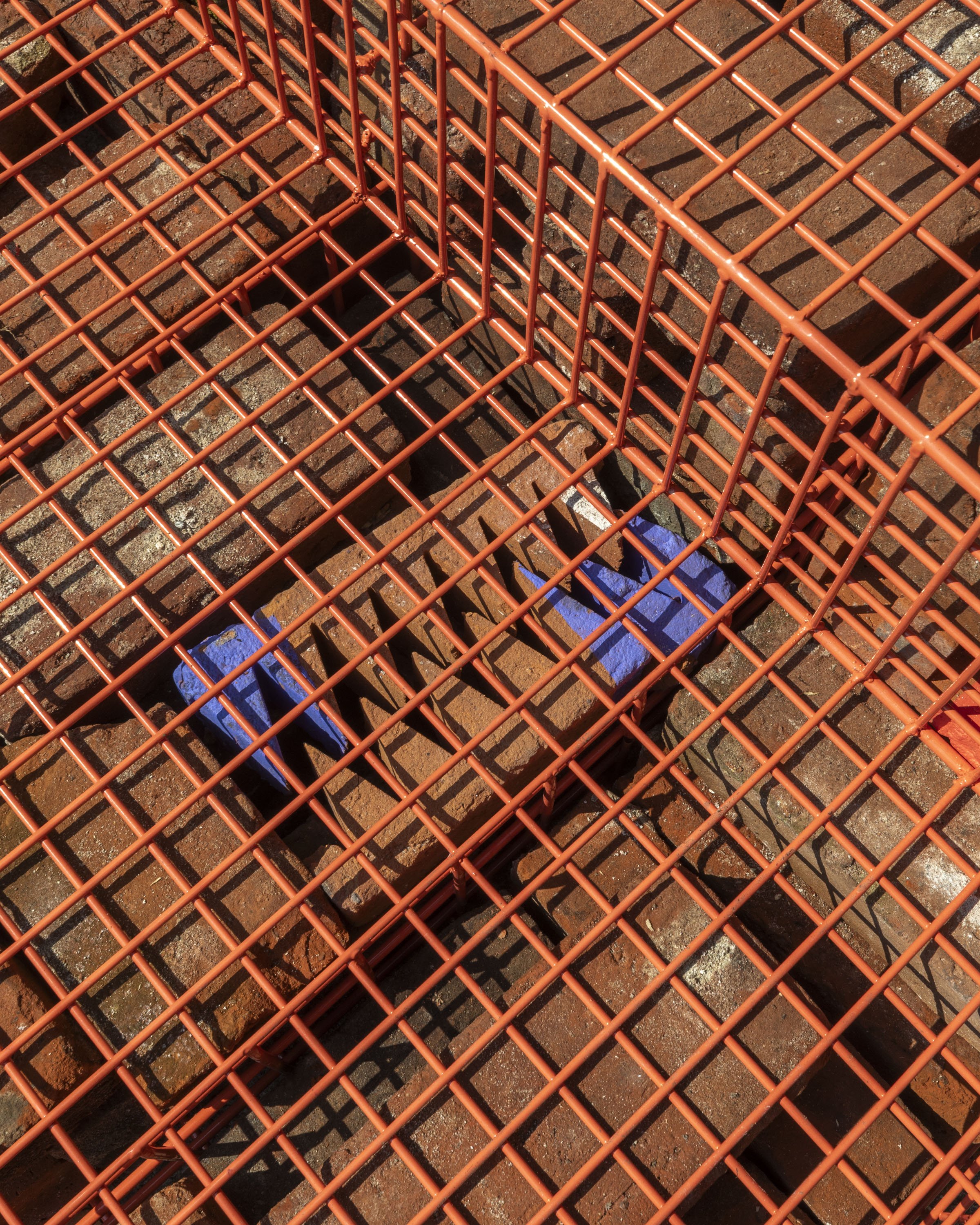
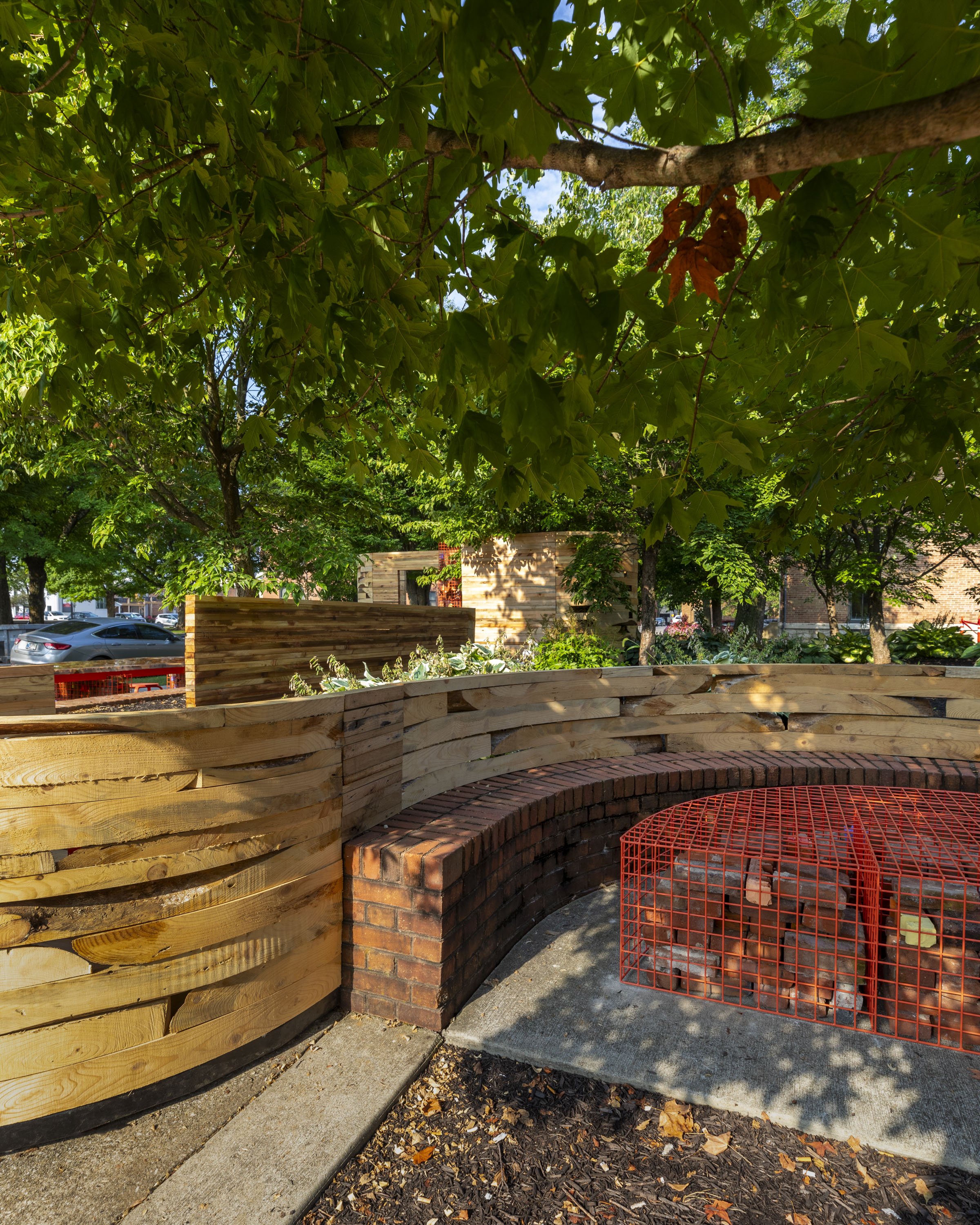
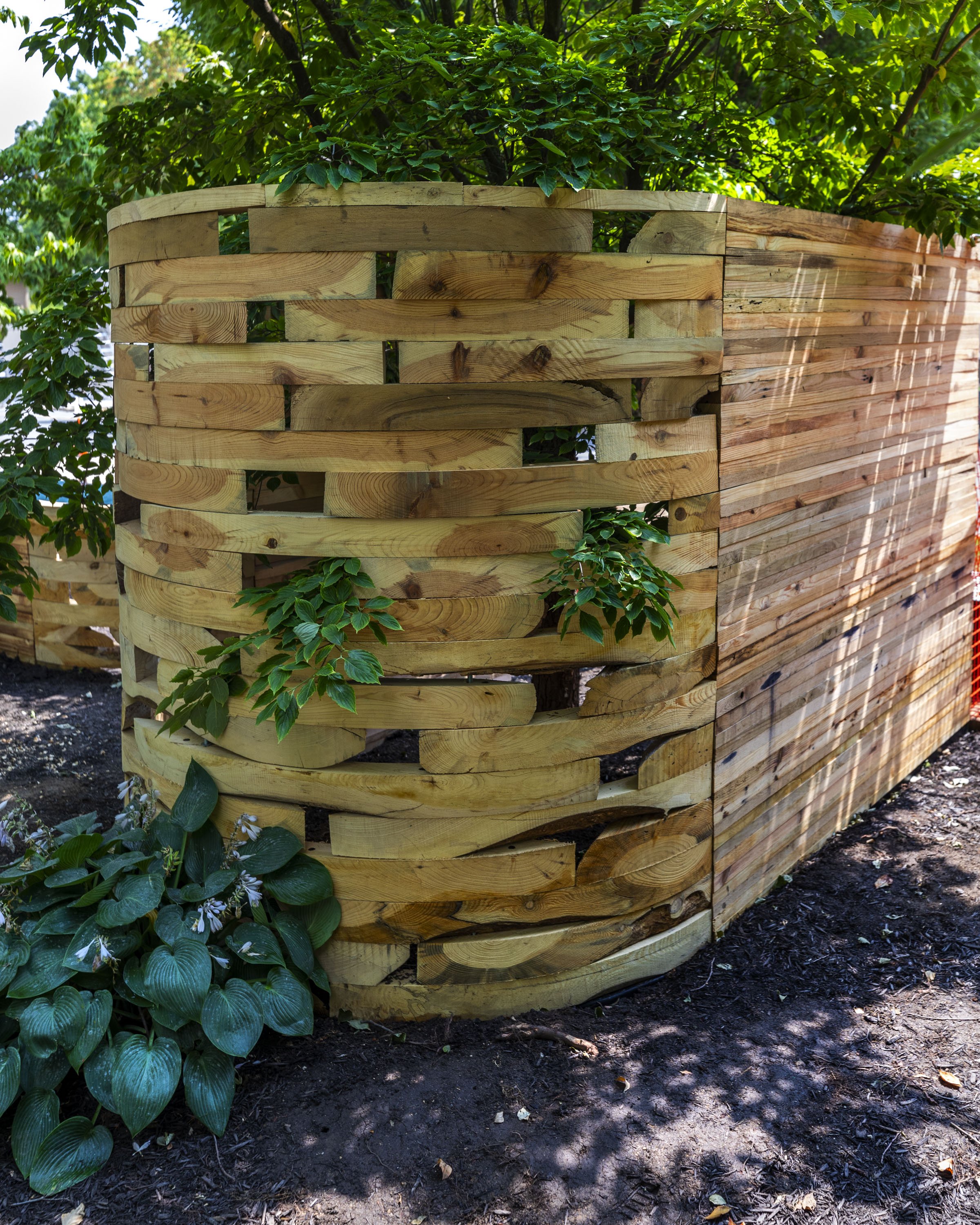
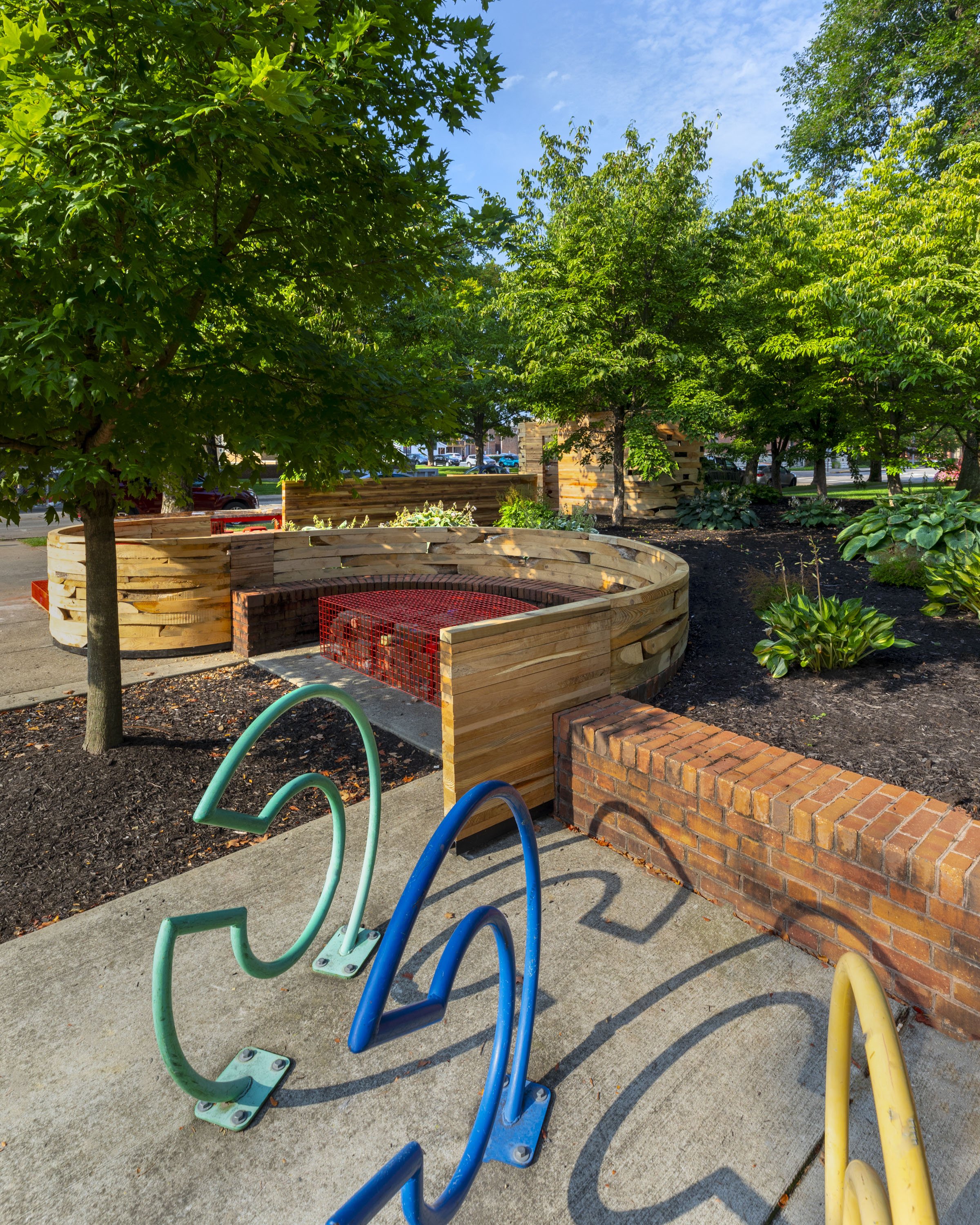
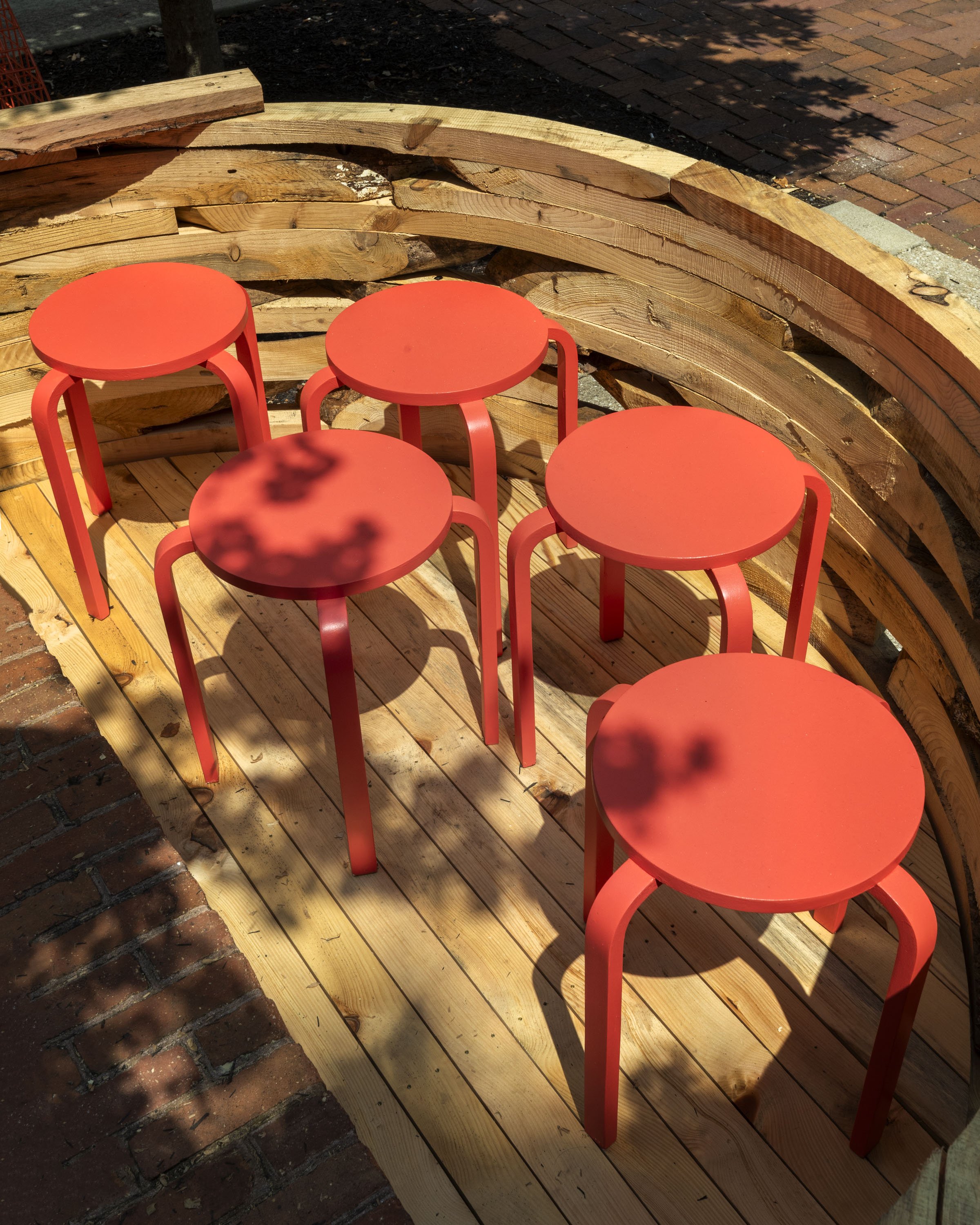
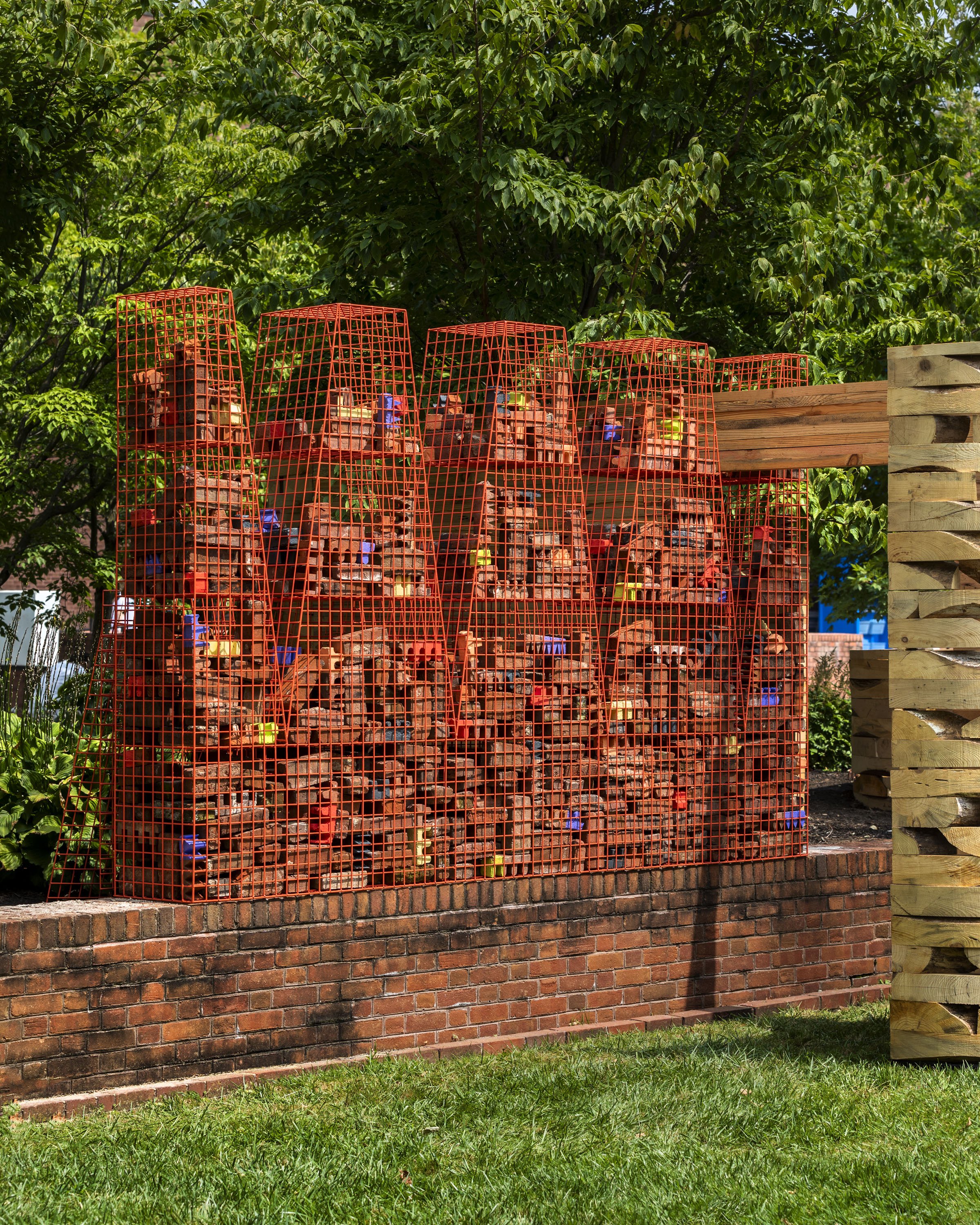
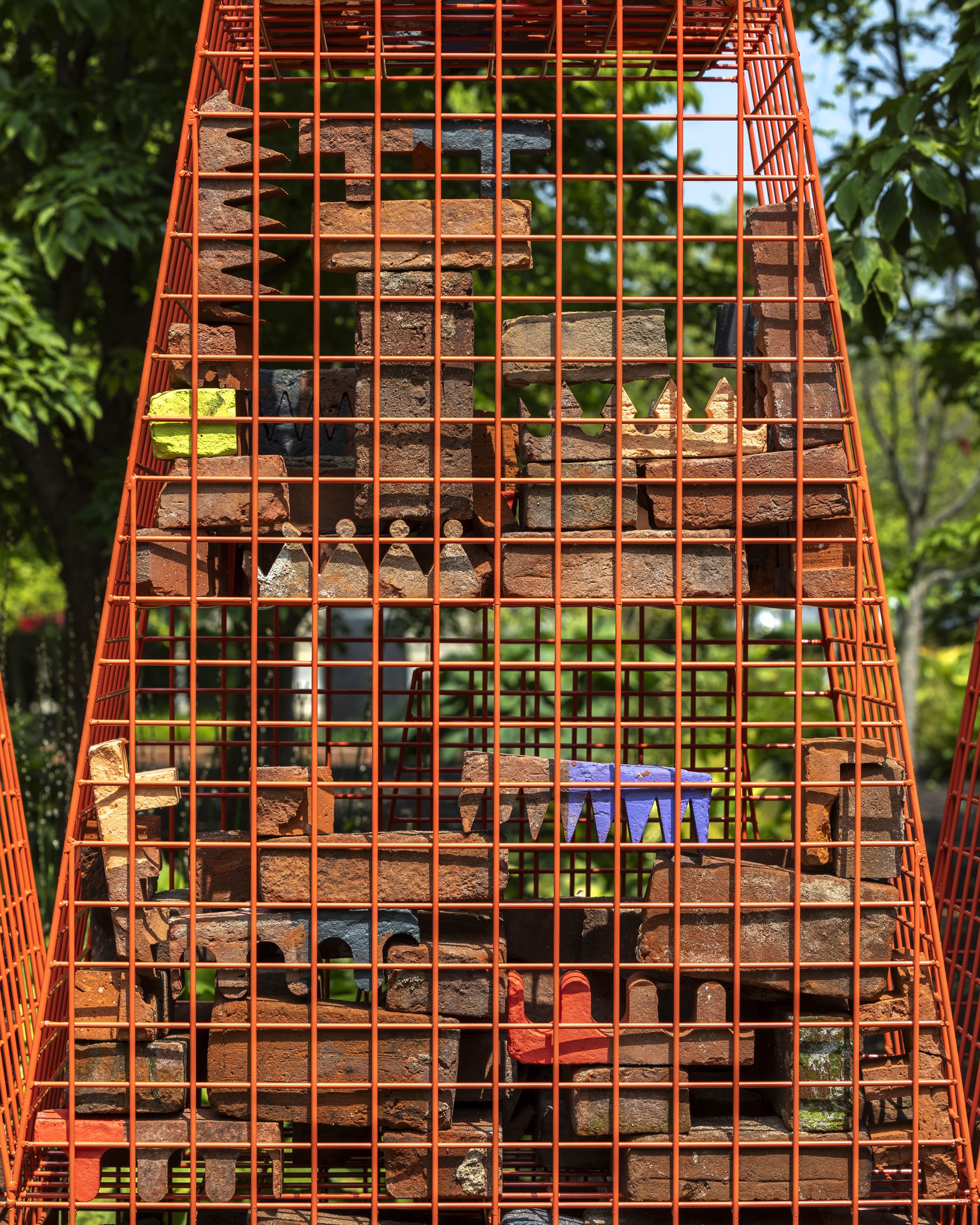
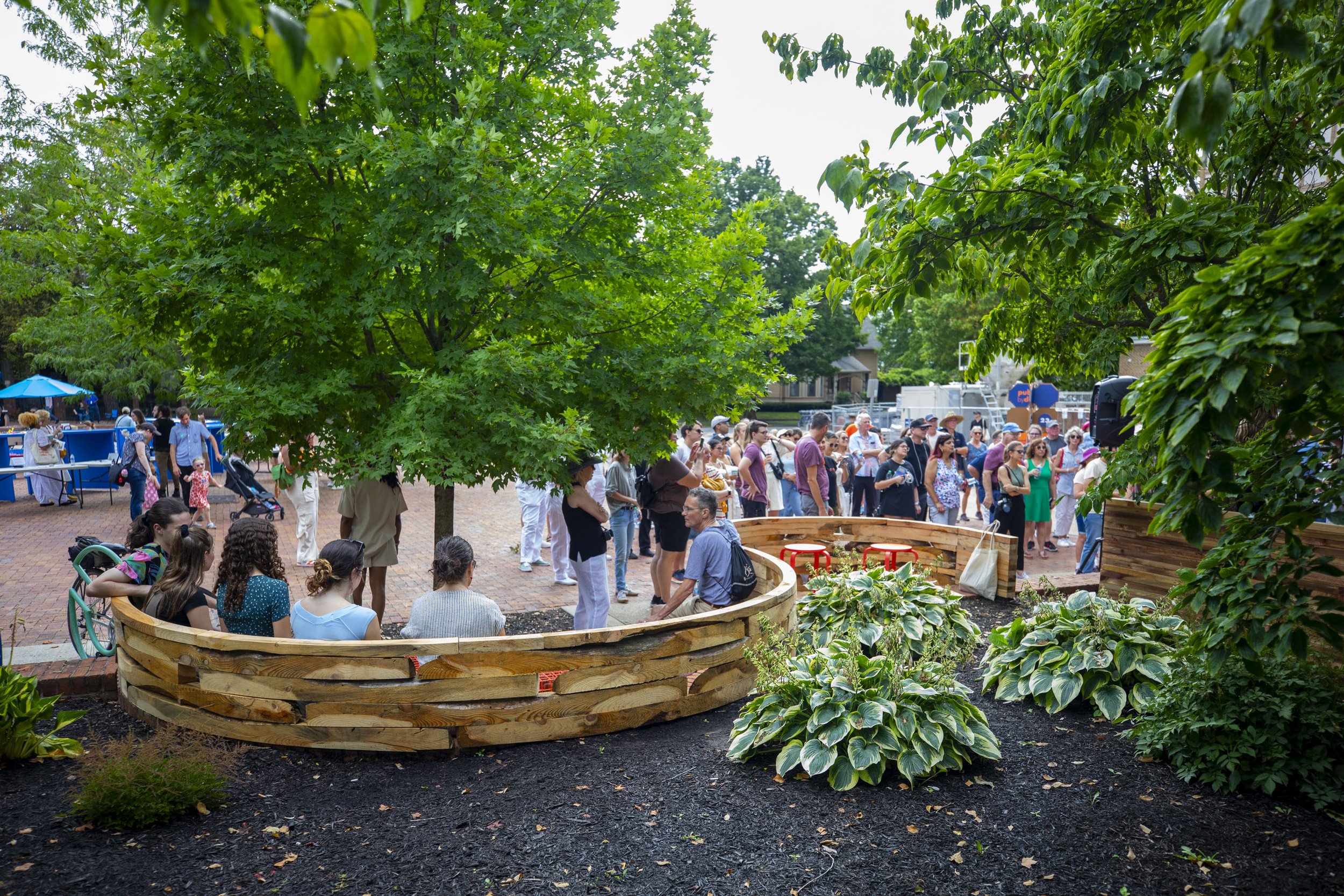
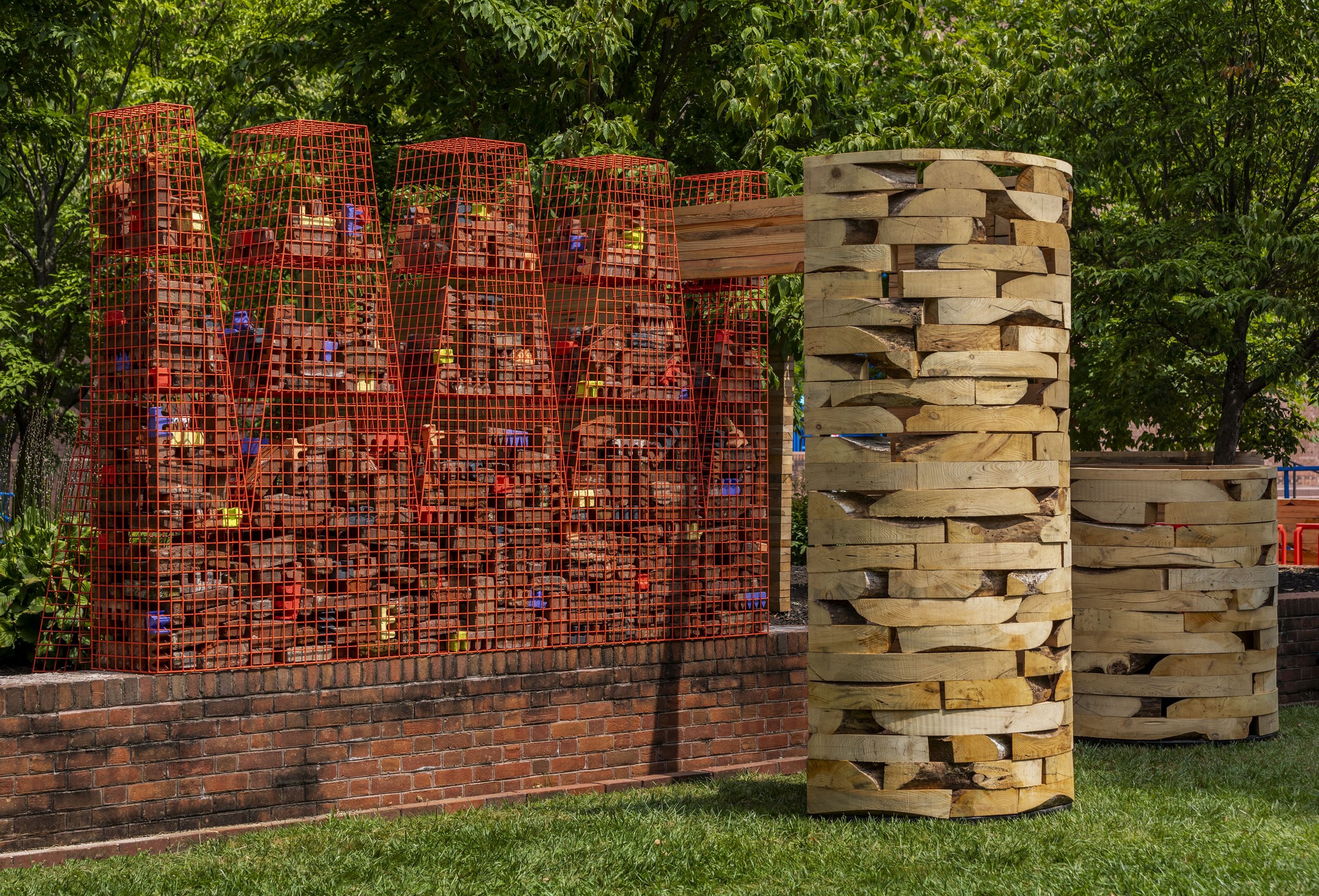
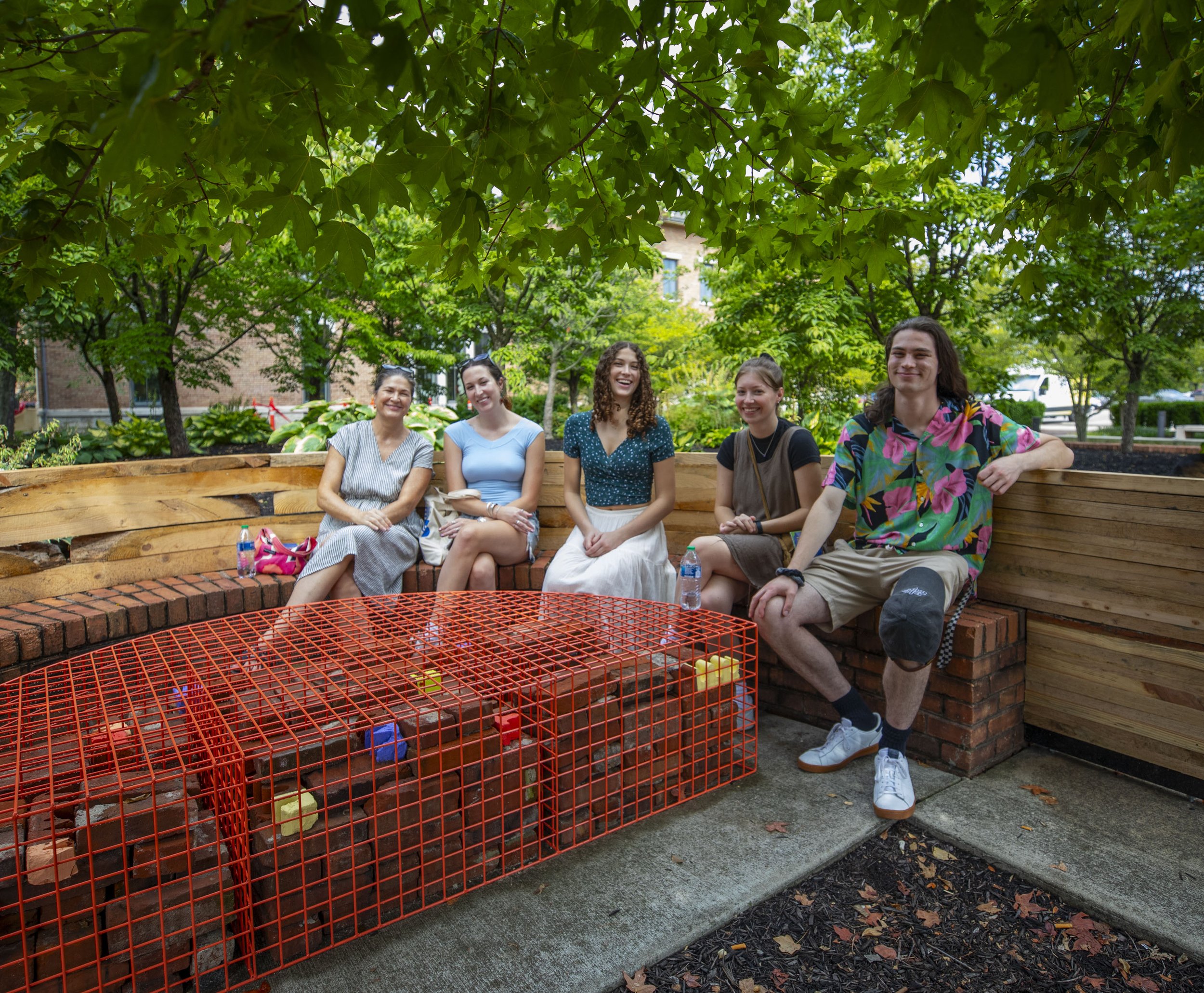
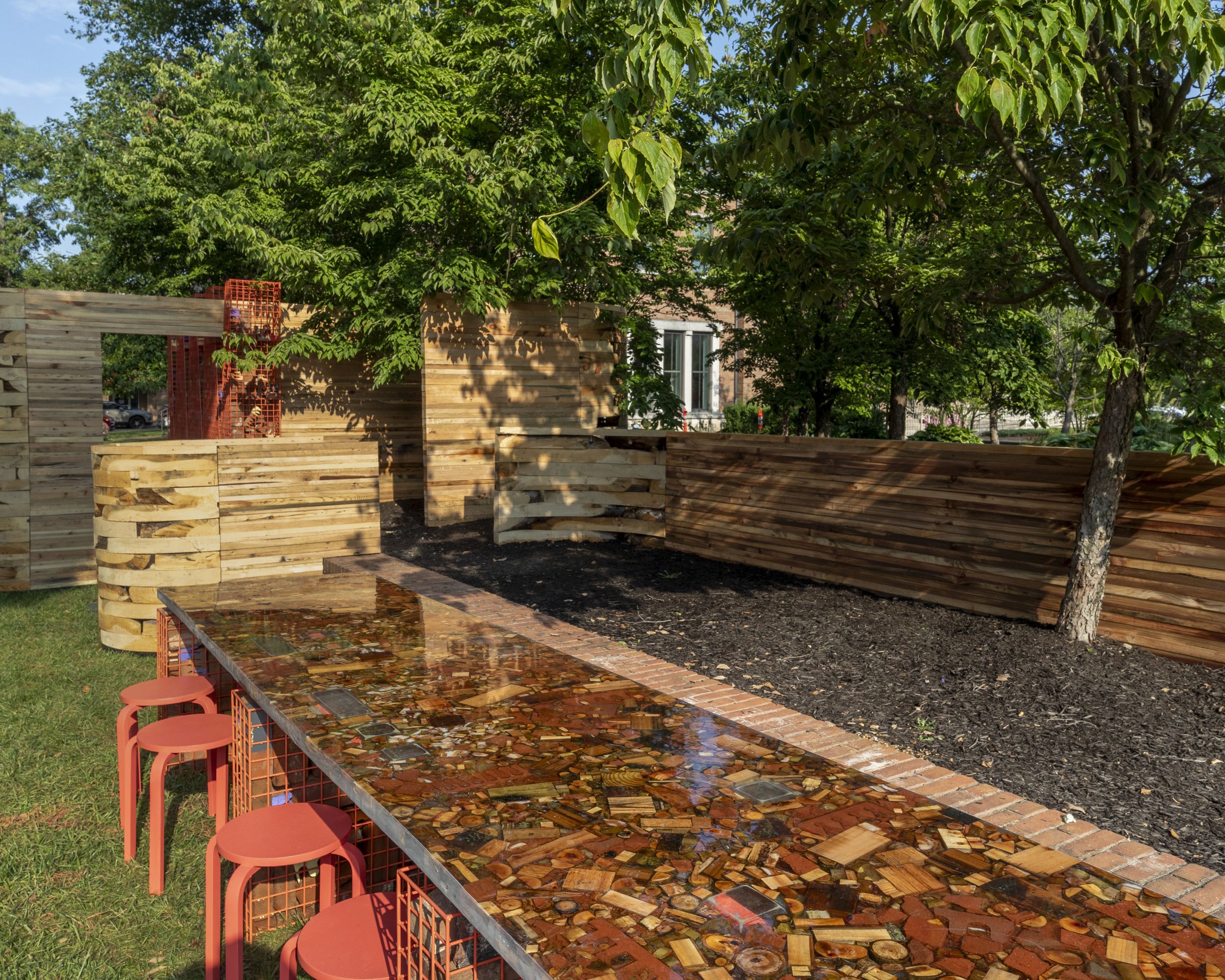
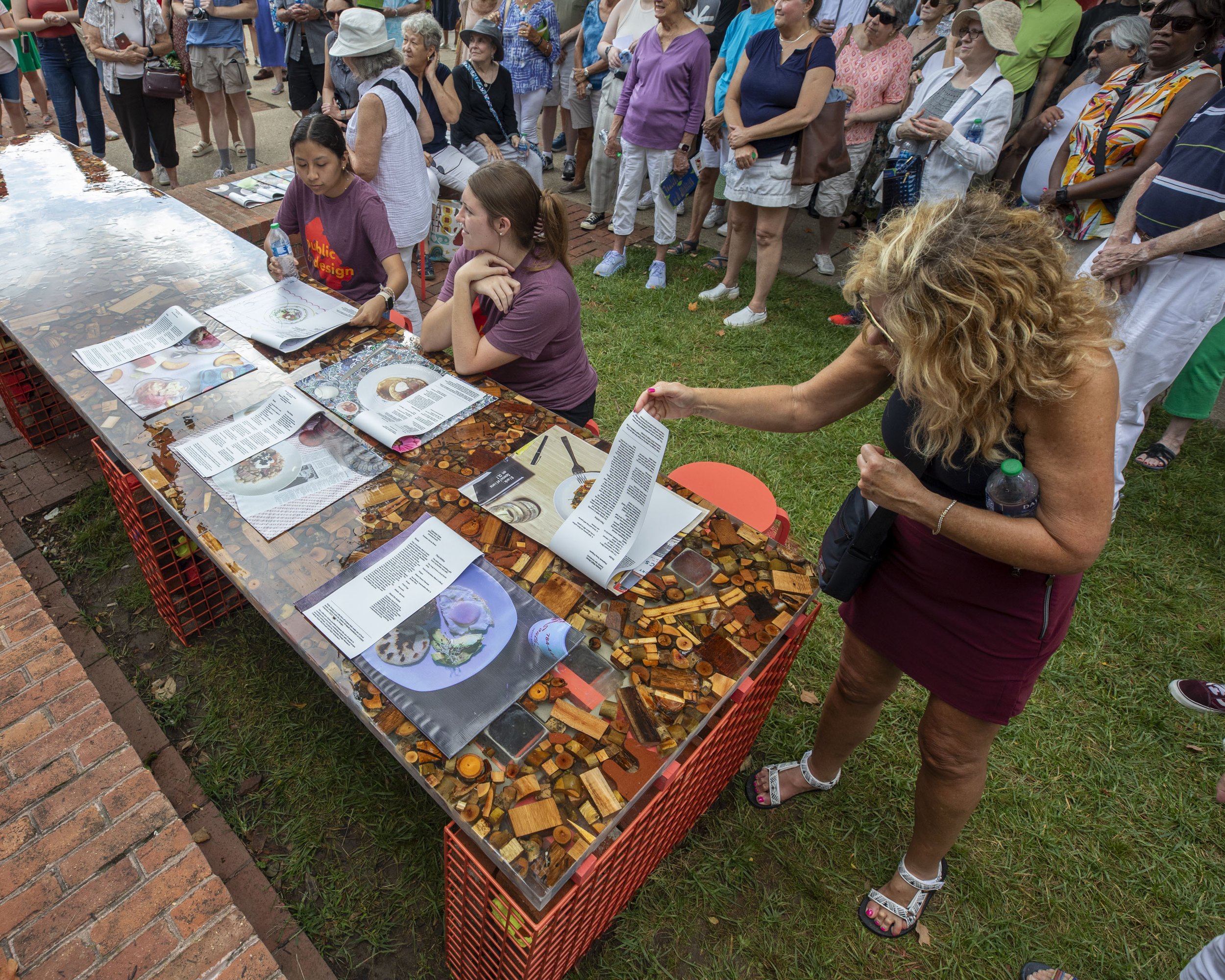
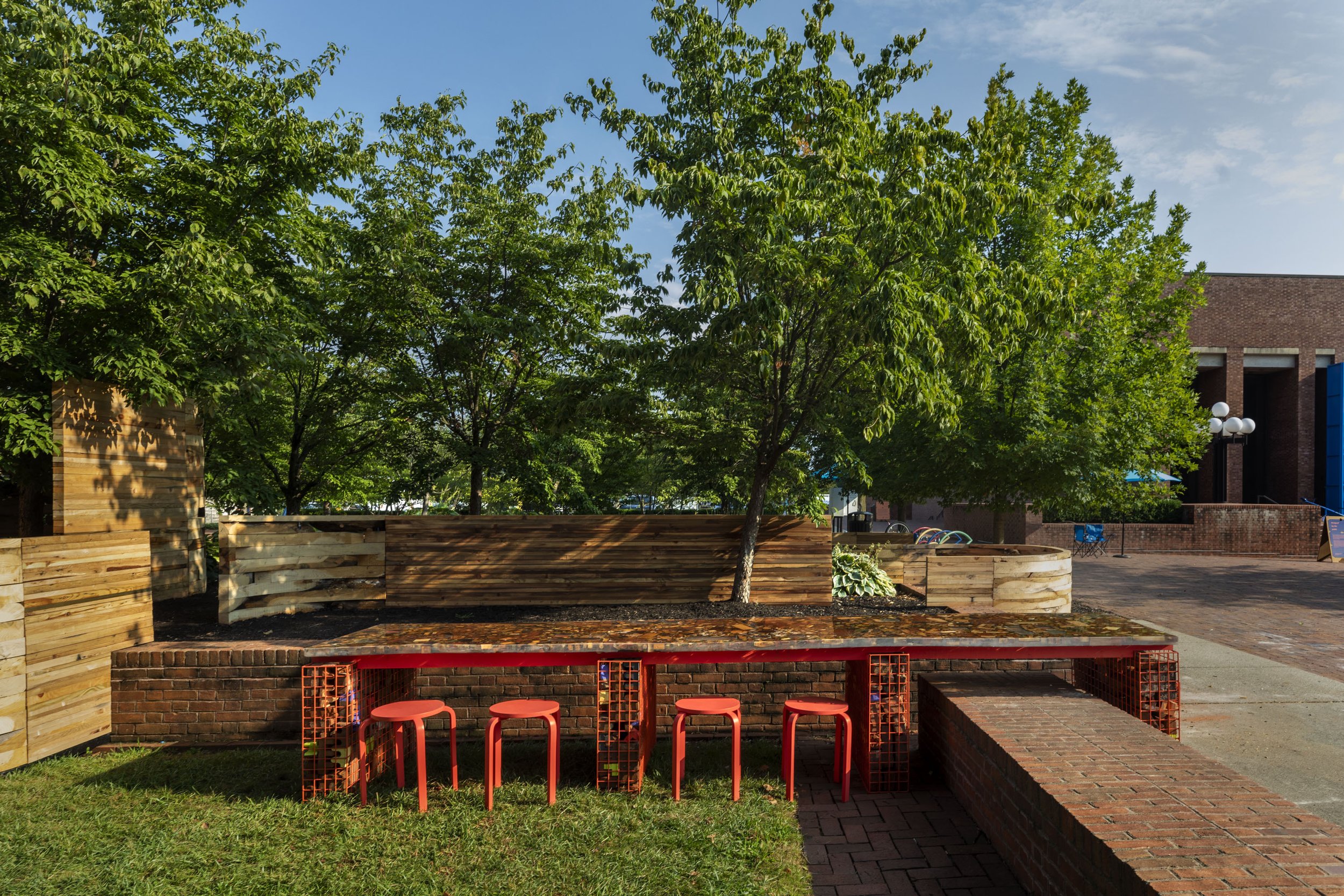
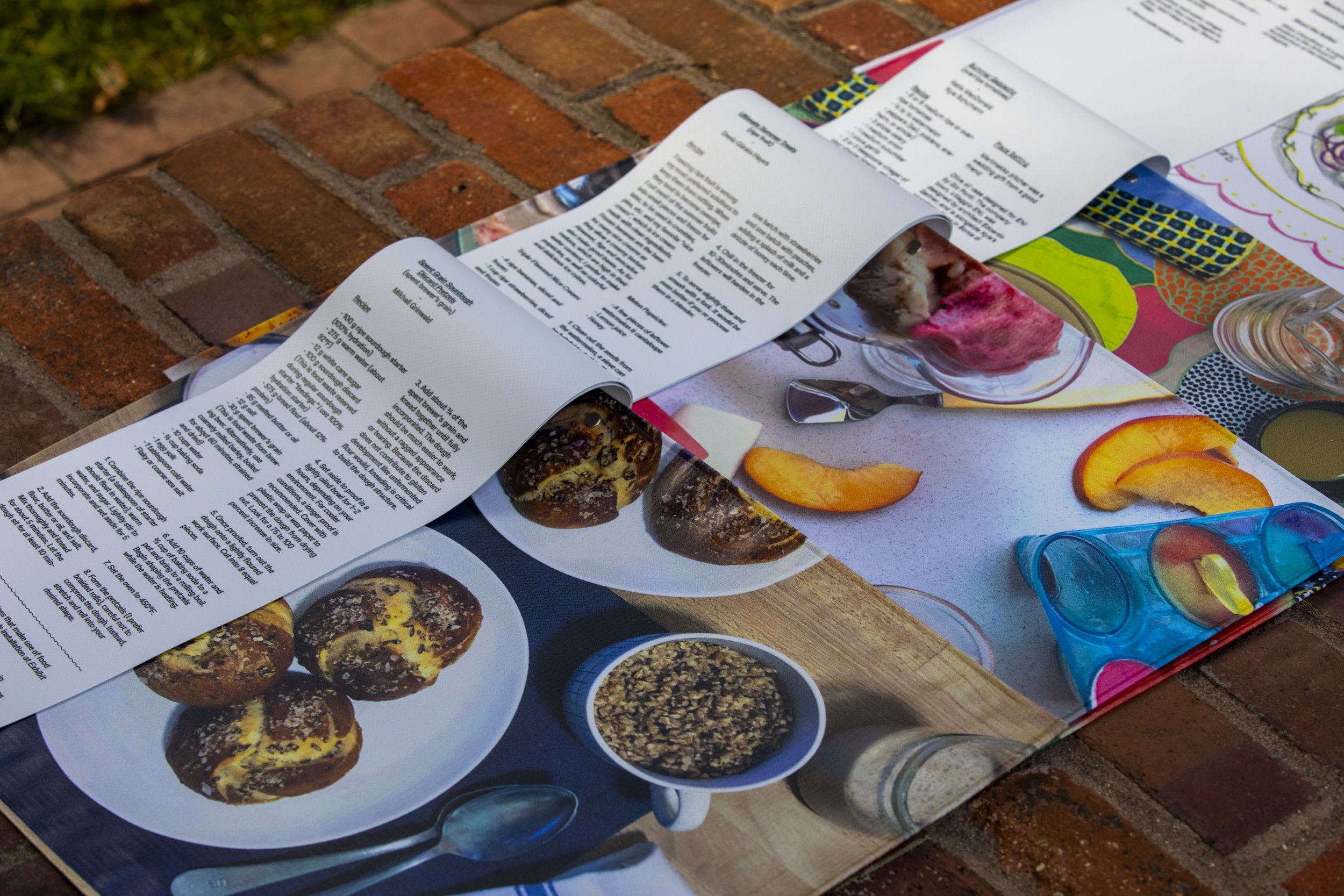
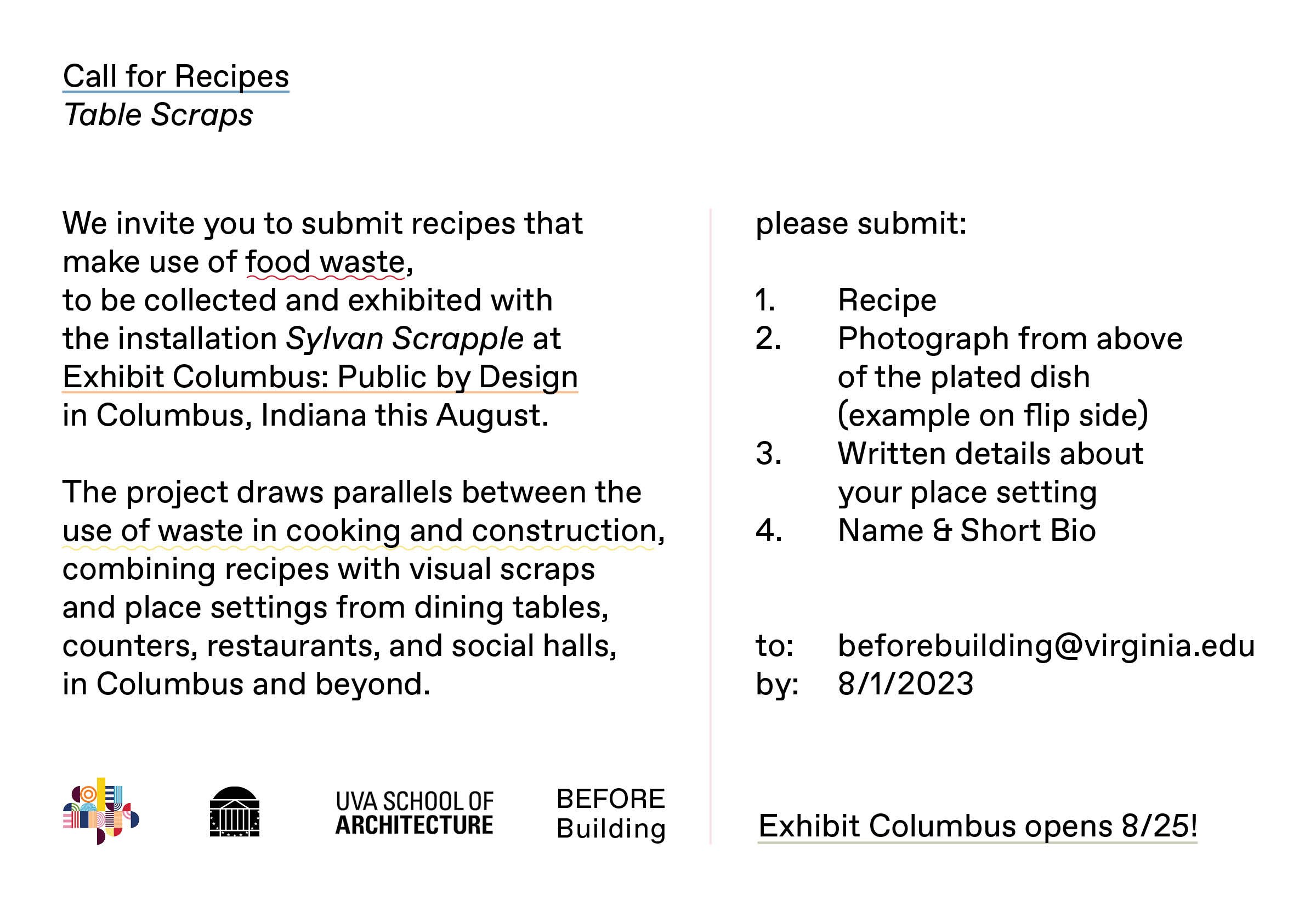
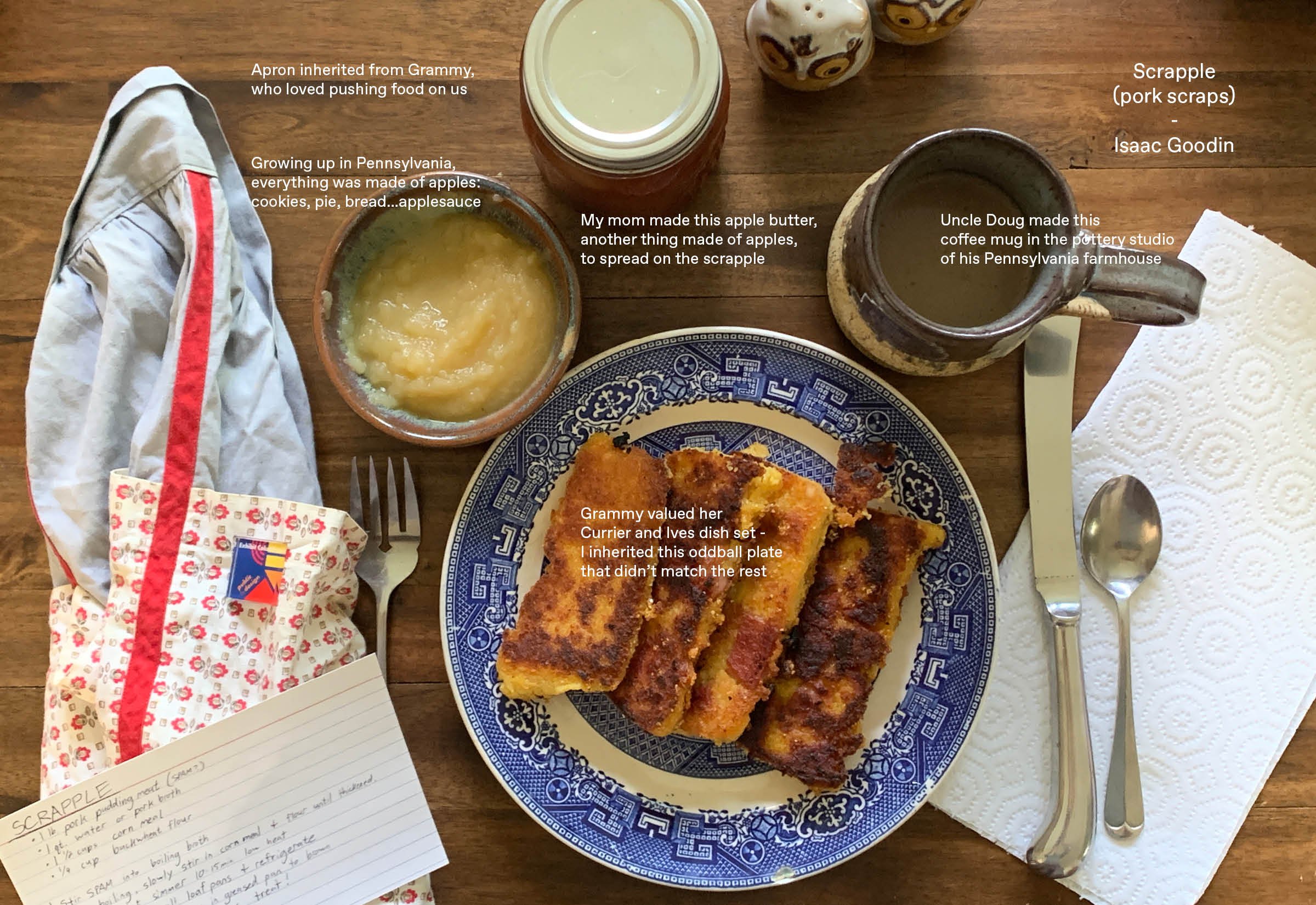
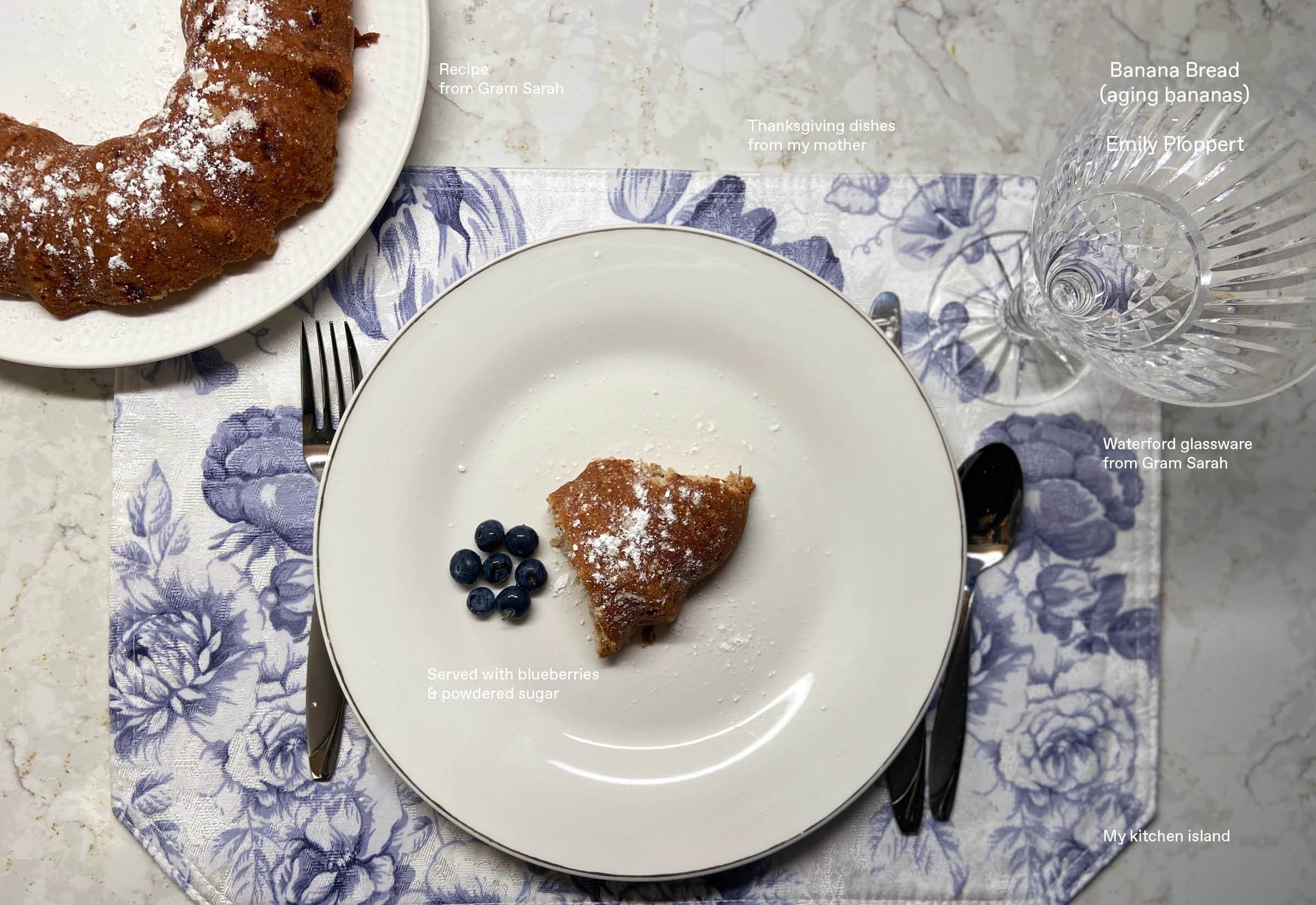
Sylvan Scrapple Installation Credits
University Design Research Fellowship
Presented by
Columbus Area Visitors Center
Site and Collaborator
Columbus Area Visitors Center
University
University of Virginia School of Architecture
Team
Katie MacDonald
Kyle Schumann
Student Research Assistants
Shiza Chaudhary
Ammon Embleton
Isaac Goodin
Emily Ploppert
Margaret Saunders
Materials
Reclaimed lumber, Waste logs felled by storm, disease, or other causes, Salvaged bricks from the Irwin Block and Eliel Saarinen’s First Christian Church tower, Thermoformed plastic panels from the tower, Fallen branches from Mill Race Park, Bioresin, Steel, Paint
Fabrication Supporters
The Jefferson Trust
University of Virginia Arts, the Office of the Provost, and the Vice Provost for the Arts
The University of Virginia School of Architecture
University of Virginia School Sawmilling
University of Virginia School of Architecture FabLab: Melissa Goldman, Trevor Kemp, Andrew Spears
Site and Collaborator: Columbus Area Visitors Center
Curatorial Question
How do we interpret the past?
“This led them to investigate demolition materials locally in Columbus, gathering bricks from the burned Irwin Block building and the First Christian Church tower restoration project.”
Katie MacDonald and Kyle Schumann met while studying architecture at Cornell University and have been a professional and personal couple ever since. Katie grew up in Los Angeles, with her parents working in art and business. One of her earliest spatial memories was attending a midcentury church with furnishings designed by Sam Maloof. Kyle’s family raises alpacas and grows their food in Vermont. He learned to use a bandsaw at the age of 7.
The couple says their work is driven by material resourcefulness. For their installation, they wanted to build on Columbus’ engineering legacy and tap into the local material economy.
Realizing the sawmill manufacturer, Wood-Mizer is headquartered in Indianapolis, they also drew from Indiana’s sawmilling history. Their installation demonstrates new approaches to working with wood enabled by maturing digital technologies. They said their experience in Columbus has been memorable. While it is a small city with a unique architectural history, the challenges faced by Columbus–activating the downtown post-pandemic, empowering the public as designers and builders, and building sustainably–are shared by many cities across the United States and beyond.
Katie and Kyle hope to show that a resourceful approach can be translated to locally available materials in any context by engaging with two different waste streams on this project.
This project is the first demonstration of their new custom-built robotic sawmill. They look forward to teasing out this technology's potential and maximizing the wood's natural shape. Whether working on public projects or private residences, responsible and inspiring material usage will continue to be their focus.
This excerpt is from the 2023 Field Guide. Download it here.
Activity Guide for kids and families to explore the Exhibition.
Download the activity for the installation Sylvan Scrapple. Print at home, or stop by any Infohub to pick up a free guide.
Creating Sylvan Scrapple
2023 Design Presentations
Sylvan Scrapple installation design concept by 2022–23 University Design Research Fellows Katie MacDonald and Kyle Schumann from University of Virginia School of Architecture in Charlottesville, Virginia.
“Underlying its abundance of progressive architecture is Columbus’ legacy as a leader in manufacturing and engineering. Today, the climate crisis makes forging connections between industry and building design professionals increasingly important—together, we can advance strategies to reduce the impacts of construction and building operation on the environment. We are excited to engage Columbus’ culture of innovation as we develop a project aimed at both activating the downtown and piloting novel approaches to circular construction.” — Katie MacDonald and Kyle Schumann
2022 Symposium
Katie MacDonald and Kyle Schumann in discussion with other UDRFellows and the Curatorial Team at the 2022 Symposium in October. Take a look back at the 2022 Symposium here.
University Design Research Fellowship
Katie MacDonald and Kyle Schumann
University of Virginia School of Architecture
Charlottesville, VA
Katie MacDonald is Assistant Professor of Architecture at the University of Virginia School of Architecture where she is Director of the Before Building Laboratory, Co-Director of the Hemp Co-Lab, and Co-Curator of the Biomaterial Building Exposition. She pioneers new biomaterial assemblies, with the aim of creating building material systems that sequester carbon and reduce construction’s contribution to the environmental crisis. She is also the Co-Founder of After Architecture with Kyle Schuman and a member of Madame Architect’s National Council.
Kyle Schumann Assistant Professor of Architecture at the University of Virginia School of Architecture where he is Co-Director of the Before Building Laboratory and Co-Curator of the Biomaterial Building Exposition. He seeks to advance the accessibility of digital fabrication in his teaching and research as well as inventing and building low-cost ground-up fabrication and imaging systems. His work spans woodworking, metalworking, casting, ceramics, and textile production, to advanced and novel digital fabrication technologies, robotics, and machine visioning systems. He is also Co-Founder of After Architecture.
Existing work by Katie MacDonald and Kyle Schumann
Homegrown, a temporary pavilion installed in the Knoxville Museum of Art’s South Garden, proposes an alternative material ethic by making use of small-scale landscaping waste, including invasive species such as kudzu, bamboo, and various tree species, as well as forestry waste. Credit: After Architecture
Camp Barker Memorial frames the three entrances to Garrison Elementary School's campus, marking the site’s history as a Civil War contraband camp. The project takes the monument off its pedestal and integrates it into the school grounds’ perimeter fence, making the memorial integral to the school’s street frontage. Credit: Sam Oberter
Tangential Timber develops a structural application for non-linear wood by adapting an initial vault design to non-standard material stock of irregularly shaped and sized timber cookies. Credit: After Architecture




